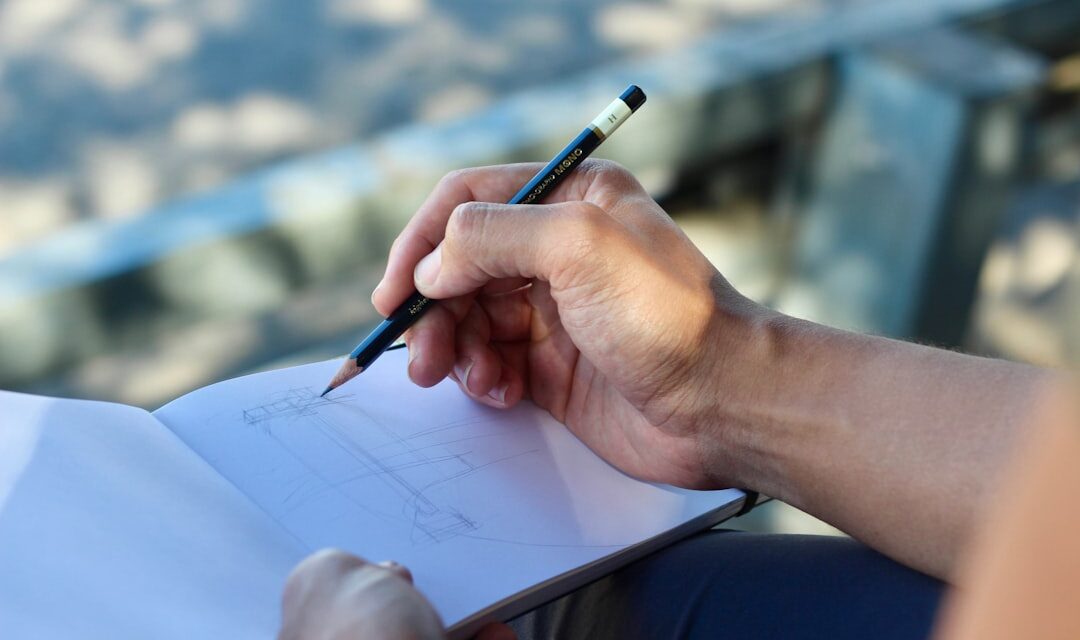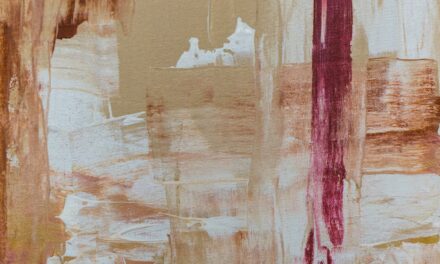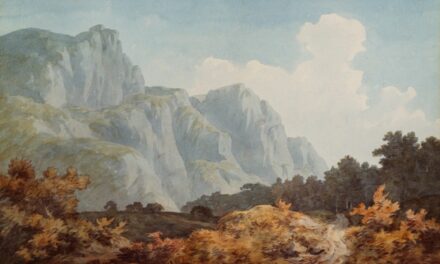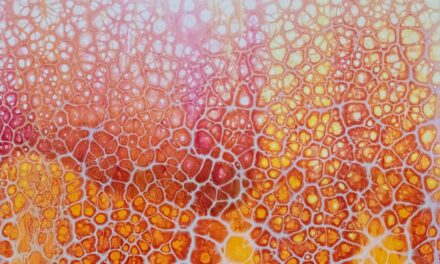Contour drawing is a fundamental artistic technique that focuses on capturing the outline and essential features of a subject without the distraction of intricate details or shading. This method encourages artists to observe their subjects closely, translating three-dimensional forms into two-dimensional representations through the use of continuous lines. The primary aim of contour drawing is to develop an understanding of the subject’s shape, proportion, and spatial relationships, allowing the artist to convey a sense of form and volume.
Unlike traditional drawing methods that may rely heavily on shading and texture, contour drawing prioritises the purity of line and the essence of the subject, making it a powerful tool for both beginners and seasoned artists alike. The practice of contour drawing often involves a technique known as “blind contour drawing,” where the artist draws the outline of a subject without looking at the paper. This approach fosters a deeper connection between the artist and the subject, as it compels one to focus entirely on observation rather than the act of drawing itself.
The resulting artwork may appear abstract or distorted, yet it captures the essence of the subject in a unique way. By engaging in contour drawing, artists can enhance their observational skills, improve hand-eye coordination, and develop a more intuitive understanding of form and space, all of which are crucial elements in the broader realm of visual art.
Summary
- Contour drawing is a technique that involves drawing the outline of an object or subject without lifting the pen or pencil from the paper.
- The history of contour drawing can be traced back to the 15th century, with artists like Leonardo da Vinci using this technique in their work.
- To practice contour drawing, all you need is a pen or pencil and paper, making it an accessible and affordable art form.
- Techniques for contour drawing include focusing on the outline, using a continuous line, and drawing slowly and deliberately.
- Famous artists known for their use of contour drawing include Pablo Picasso and Henri Matisse, who used this technique to capture the essence of their subjects.
History of Contour Drawing
The origins of contour drawing can be traced back to ancient civilisations, where artists sought to depict their surroundings through simple lines and shapes. In ancient Egypt, for instance, artists employed linear techniques to create hieroglyphs and wall paintings that conveyed both narrative and symbolic meaning. These early forms of contour drawing laid the groundwork for future artistic movements by emphasising the importance of line as a means of expression.
As art evolved through the ages, contour drawing continued to play a significant role in various cultures, influencing styles from classical to modern art. The 20th century saw a resurgence of interest in contour drawing, particularly within the realms of modernism and abstraction. Artists such as Pablo Picasso and Henri Matisse embraced contour techniques as a way to break free from traditional representational art.
Their innovative approaches challenged conventional notions of perspective and form, leading to new ways of seeing and interpreting the world. This period marked a pivotal moment in art history, as contour drawing became not only a method for representation but also a means of exploring deeper emotional and conceptual themes. The legacy of these artists continues to inspire contemporary practitioners who seek to push the boundaries of artistic expression through line and form.
Materials Needed for Contour Drawing

To embark on a contour drawing journey, one does not require an extensive array of materials; simplicity is often key to this practice. A basic set-up typically includes drawing paper or sketchbooks, which can vary in texture and weight depending on personal preference. Smooth paper is often favoured for its ability to allow for fluid line work, while textured paper can add an interesting dimension to the final piece.
Additionally, artists may choose between various drawing implements such as pencils, charcoal, ink pens, or even markers. Each medium offers distinct qualities that can influence the outcome of the contour drawing, allowing for experimentation and personal expression. In addition to traditional materials, artists may also consider incorporating unconventional tools into their contour drawing practice.
For instance, using a brush with ink can create dynamic lines that vary in thickness and intensity, adding an element of spontaneity to the work. Alternatively, digital tools such as tablets and styluses have become increasingly popular among contemporary artists, enabling them to explore contour drawing in a digital format. Regardless of the materials chosen, the essence of contour drawing lies in the artist’s ability to observe and translate their observations into line, making it accessible to anyone willing to engage with their surroundings creatively.
Techniques and Tips for Contour Drawing
When approaching contour drawing, several techniques can enhance the experience and outcome of the artwork. One effective method is to begin with warm-up exercises that encourage free movement and fluidity in line work. Artists can practice drawing simple shapes or objects from different angles without lifting their pencil from the paper.
This exercise not only helps to loosen up the hand but also fosters a sense of confidence in one’s ability to capture form through line alone. Additionally, focusing on breathing and maintaining a relaxed posture can further facilitate a more intuitive drawing process. Another valuable tip for successful contour drawing is to embrace imperfection.
The beauty of this technique lies in its ability to capture the essence of a subject rather than striving for photographic accuracy. Artists should allow themselves to make mistakes and view them as opportunities for exploration rather than failures. By adopting a mindset that values experimentation over perfectionism, one can unlock new avenues for creativity and self-expression.
Furthermore, taking breaks during longer sessions can help maintain focus and prevent fatigue, allowing for fresh perspectives when returning to the drawing.
Famous Artists Known for Contour Drawing
Throughout art history, numerous artists have made significant contributions to contour drawing, each bringing their unique style and perspective to this technique. One notable figure is Paul Klee, whose whimsical and abstract works often employed contour lines to convey emotion and movement. Klee’s ability to distill complex forms into simple outlines exemplifies how contour drawing can transcend mere representation, inviting viewers into a world of imagination and interpretation.
His playful approach serves as an inspiration for contemporary artists seeking to explore the boundaries of line and form. Another prominent artist associated with contour drawing is Alberto Giacometti, renowned for his elongated figures that evoke a sense of existentialism and isolation. Giacometti’s use of line was not merely about outlining; it was about capturing the essence of human experience through minimalistic forms.
His works challenge viewers to engage with the emotional weight carried by each line, demonstrating how contour drawing can serve as a powerful vehicle for conveying deeper themes within art. These artists exemplify how contour drawing can be employed not only as a technical skill but also as a means of exploring profound concepts within visual expression.
Contemporary Uses of Contour Drawing

In contemporary art practice, contour drawing has found its place across various disciplines beyond traditional fine art. Many graphic designers utilise contour techniques in their work to create logos, illustrations, and branding materials that rely on clean lines and recognisable shapes. The simplicity inherent in contour drawing allows designers to communicate ideas effectively while maintaining visual appeal.
This adaptability highlights how contour techniques can bridge the gap between fine art and commercial design, demonstrating their relevance in today’s creative landscape. Moreover, contour drawing has gained traction in educational settings as an effective tool for teaching observation skills and fostering creativity among students. Art educators often incorporate contour exercises into their curricula to help students develop their ability to see shapes and forms accurately.
By engaging in this practice, learners cultivate not only technical skills but also critical thinking abilities as they analyse their subjects from different perspectives. The integration of contour drawing into educational frameworks underscores its versatility as both an artistic technique and a pedagogical tool that nurtures creativity across various age groups.
Benefits of Practicing Contour Drawing
Engaging in contour drawing offers numerous benefits that extend beyond mere artistic skill development. One significant advantage is the enhancement of observational skills; artists learn to see beyond surface details and recognise underlying shapes and structures within their subjects. This heightened awareness translates into improved accuracy in other forms of artistic expression, allowing individuals to approach their work with greater confidence and insight.
Furthermore, practising contour drawing encourages mindfulness by promoting focused attention on the present moment—a valuable skill that can be applied across various aspects of life. Additionally, contour drawing serves as an excellent exercise for developing hand-eye coordination. As artists strive to translate what they see onto paper without looking down at their hands or the page itself, they cultivate a deeper connection between their visual perception and motor skills.
This practice not only enhances technical proficiency but also fosters a sense of freedom in artistic expression. By liberating oneself from rigid expectations surrounding perfectionism, artists can explore new avenues for creativity while enjoying the process itself—an essential aspect of any artistic journey.
How to Get Started with Contour Drawing
To embark on your journey into contour drawing, begin by selecting a subject that intrigues you—this could be anything from a still life arrangement to a figure or even an outdoor scene. Settle into a comfortable space with your chosen materials at hand; ensure you have adequate lighting to facilitate clear observation. As you prepare to draw, take a moment to observe your subject closely—notice its shapes, lines, and proportions before putting pencil to paper.
This initial observation phase is crucial as it lays the foundation for your subsequent drawing. Once you feel ready, start your contour drawing by placing your pencil on the paper without lifting it until you have completed your outline. Focus solely on your subject; resist the urge to glance at your paper frequently.
Allow your hand to move fluidly as you trace the contours you see before you—embrace any imperfections that arise along the way; they are part of your unique artistic expression. After completing your first contour drawing session, take time to reflect on your experience—consider what worked well and what challenges you faced—and use these insights to inform your future practice as you continue exploring this captivating technique.
For those interested in exploring various art techniques and their historical contexts, a deeper understanding of specific artists can be quite enlightening. For instance, if you’re intrigued by the technique of contour drawing, you might find it fascinating to learn about artists who influenced modern art movements. A recommended read would be An Introduction to the Artist Wassily Kandinsky, which delves into the life and works of a pioneering abstract artist. Kandinsky’s exploration of form and colour theory can provide a broader perspective on how different art techniques, including contour drawing, have evolved over time.




